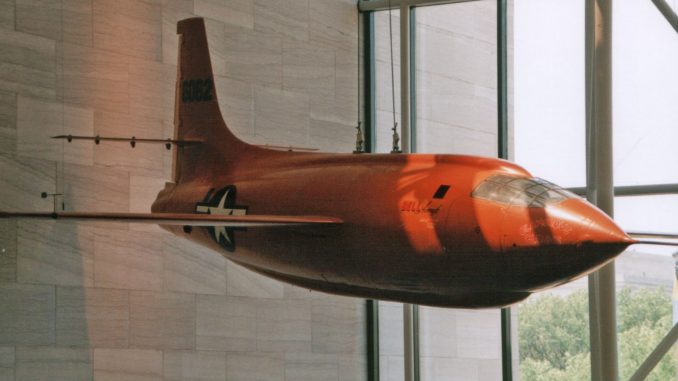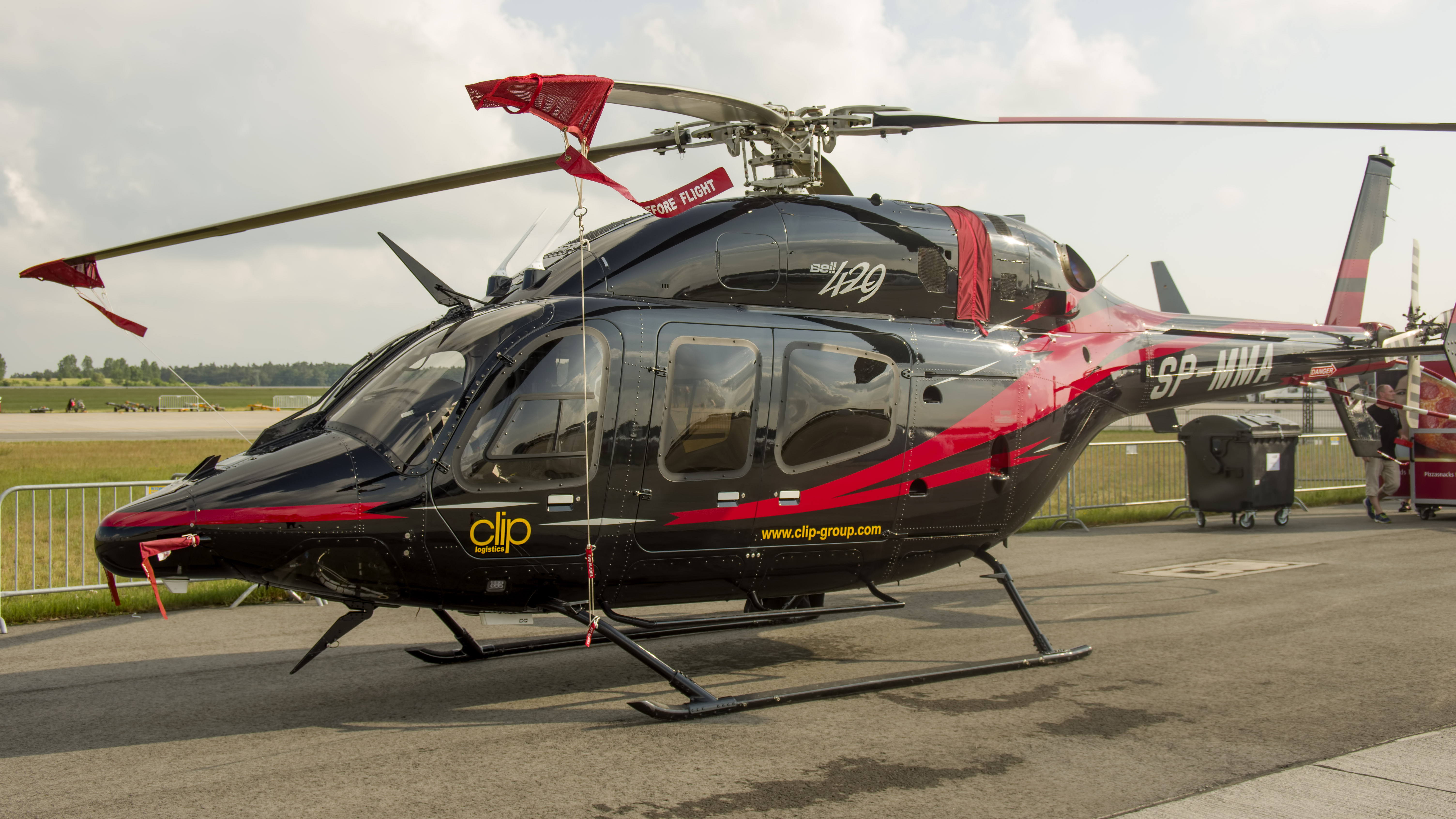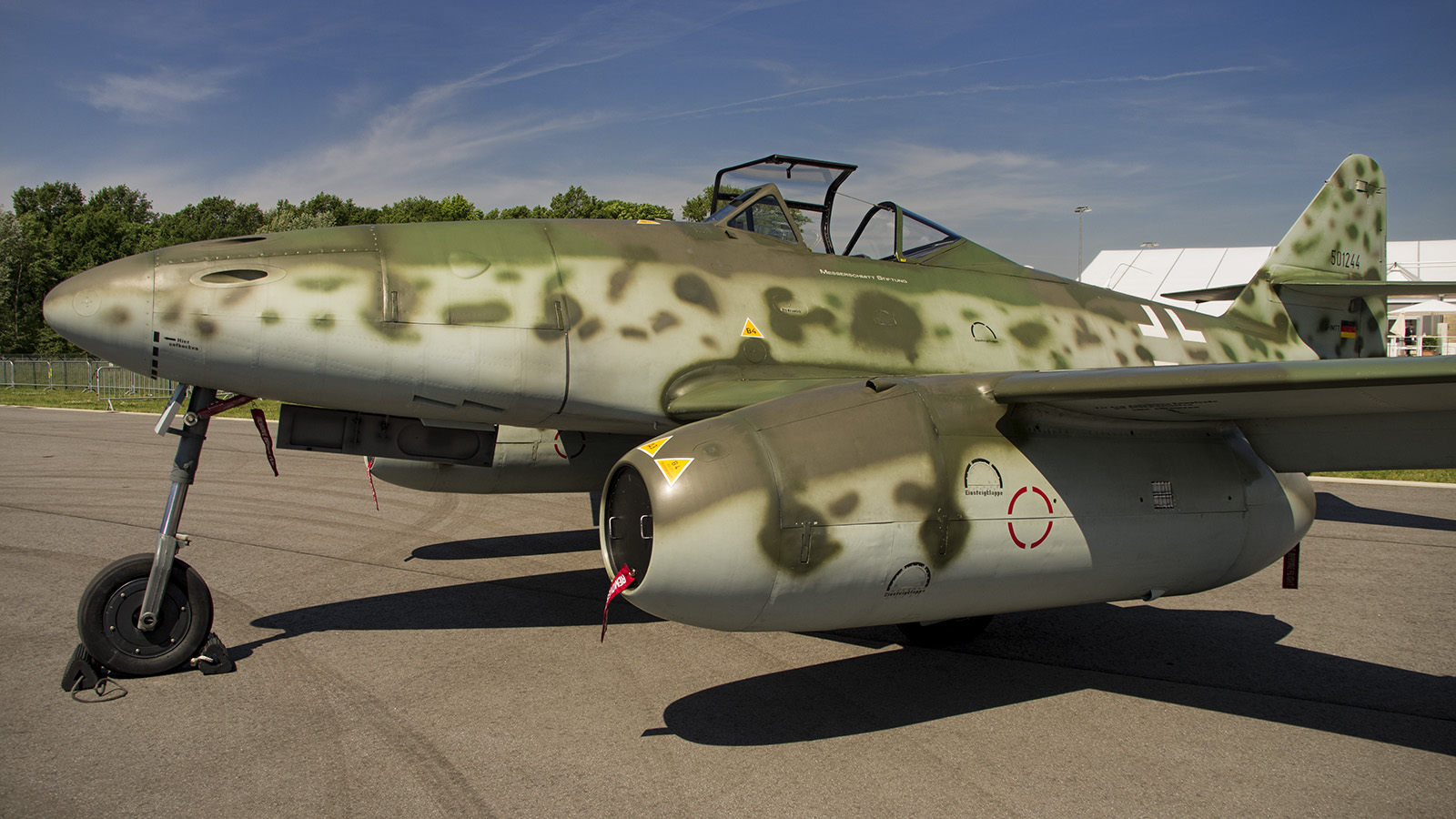
The Bell X-1, originally designated XS-1, was a joint NACA-U.S. Army Air Forces/US Air Force supersonic research project high-speed and high-altitude testing. First aircraft to break the sound barrier. Proved aerodynamic viability of thin wing sections.
Developing nation: United States of America.
Manufacturer/designer: Bell Aircraft Co., Buffalo, N.Y.
Number built: 3.
Type aircraft: supersonic research.
First flight: 19 January 1946.
State: retired 12 May 1950.
Primary user: US Air Force/NACA -National Advisory Committee for Aeronautics.
On 14 October 1947 was the first manned supersonic flight, piloted by Air Force Captain Charles “Chuck” Yeager in aircraft X-1 #46-062, nicknamed “Glamorous Glennis” , over Muroc Air Base (now Edwards Air Force Base) in the Mojave Desert. The rocket-powered aircraft was launched from the bomb bay of a specially modified B-29 and glided to a landing on a runway. XS-1 flight number 50 is the first one where the X-1 recorded supersonic flight, at Mach 1.06 (361 m/s, 1,299 km/h, 807.2 mph) peak speed.
Many important structural and aerodynamic advances were first employed in the Bell X-1, including extremely thin yet exceptionally strong wing sections and a horizontal stabilizer that could be adjusted up and down to improve control, especially at transonic (near the speed of sound) speeds. Because of the stabilizer’s success, later transonic military aircraft were designed with all moving horizontal stabilizers as standard equipment.
The X-1’s fuselage was shaped like a .50 caliber bullet. Even the windscreen was specially flaired to retain the bullet shape. The X-1 carried more than 230 kilograms (500 pounds) of flight test instruments.
A total of three X-1s were made, but by far the most famous was the X-1-1 (#46-062), which was used in the first supersonic flight. USAF pilot, Lt. Col. Frank Everest, Jr., took the X-1-1 to its highest altitude of 71,902 feet. Ten different pilots flew the Bell X-1-1 on a total of 82 flights before the plane was retired on May 12, 1950.
General characteristics
- Crew: 1
- Length: 9.45 m (31 ft)
- Wingspan: 6.96 m (22 ft 10 in)
- Height: 3.3 m (10 ft 10 in)
- Wing area: 10.68 m² (115 ft²)
- Empty weight: 3107kg (6,850 lb)
- Loaded weight: 6,690 kg (14,750 lb)
- Powerplant: 1× Reaction Motors RMI LR-8-RM-5 rocket, 6,000 lbf (26.7 kN)
Performance
- Maximum speed: 2,334 km/h (1,450 mph), (Mach 2.24)
- Range: 4 minutes 45 seconds ((powered endurance))
- Service ceiling: 27,432+ m (90,000+ ft)
46-064, being mated to the B-50 mothership for a captive flight test on 9 November 1951. While being de-fueled after this flight it exploded, destroying itself and the B-50, and seriously burning Joe Cannon. X-1-3 had only completed a single glide flight on 20 July.
Survivors
- 46-062 is currently on display in the Milestones of Flight gallery of the National Air and Space Museum in Washington, DC
- 46-063, now the X-1E, is on display in front of the NASA Dryden Flight Research Center headquarters building.
All pictures courtesy of Zijde Aviation Photo and Publishing, Rob Vogelaar





